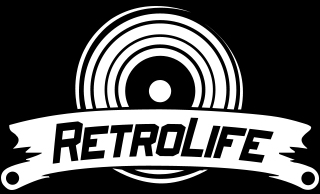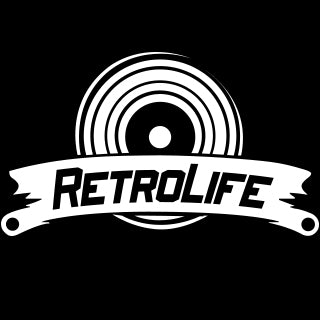There’s nothing quite like the warm, nostalgic sound of vinyl. Whether you're spinning classic albums or discovering vinyl for the first time, the charm of analog audio creates an immersive experience that digital formats simply can't replicate.
But even the best record players need a little fine-tuning to deliver optimal sound. Many vinyl enthusiasts especially beginners often ask: “How can I make my record player sound better?” The answer often lies not in buying new gear, but in setting up and maintaining your current system correctly.
In this post, we’ll show you simple, effective ways to enhance the sound of your Retrolife record player, no advanced tools or technical skills required. From stylus care to speaker placement, these tips will help you get the most out of your vinyl collection.
Position Your Turntable Correctly
One of the easiest ways to improve the sound of your Retrolife record player is by simply placing it in the right spot. It might not seem like a big deal, but turntable placement directly affects sound quality and playback performance.

- Keep It Level: Make sure your record player is sitting on a flat, stable surface. An uneven or shaky table can cause skipping, distortion, or even stylus damage over time. Use a bubble level if needed to check your setup.
- Avoid Vibrations: Speakers placed too close to your turntable or placing the player on a hollow or echo-prone surface can introduce vibrations that muddy your sound. To reduce this, consider using a turntable isolation mat or placing it on a solid wood or isolation platform.
- Stay Clear of Interference: Avoid setting your record player near large electronics like TVs, routers, or microwaves. These can cause subtle electrical interference that may affect sound quality, especially if you're using built-in preamps or Bluetooth features.
Proper positioning is the foundation of any good vinyl setup. By ensuring your Retrolife turntable is placed in a stable, low-vibration environment, you're already taking the first big step toward clearer, richer vinyl sound.
Keep Your Vinyl Records Clean
Even with the best turntable setup, dirty records can ruin your sound. Dust, fingerprints, and static buildup can cause pops, skips, and surface noise that take away from the rich detail of your music. That’s why one of the most important steps in improving your Retrolife record player’s performance is to keep your vinyl collection clean.

- Clean Before Every Play: Before placing a record on the platter, give it a quick wipe using an anti-static brush. This removes loose dust and reduces static that attracts more debris. Brushing in gentle circular motions along the grooves works best.
- Deep Clean for Older or Dirty Records: If you notice your vinyl sounding fuzzy or distorted, it may need a deeper clean. Use a record cleaning solution or a vinyl-safe cleaner along with a microfiber cloth. Gently wipe the record in circular motions, avoiding the label. There are also dedicated record cleaning kits and spinning machines available for collectors who want a more thorough approach.
- Store Your Records Properly: Cleaning is only half the battle. Store your records vertically (never stacked), away from heat and humidity. Use anti-static inner sleeves and dust-proof outer jackets to keep them in top shape long-term.
Clean records equal clean sound. If you're wondering why your record player doesn’t sound as good as it used to, chances are your vinyl just needs a little love.
Maintain the Stylus (Needle)
If you're noticing distortion, fuzziness, or skipping during playback, it may not be the record—your stylus (needle) could be the issue. The stylus is the tiny but powerful tip that reads the grooves of your vinyl, and keeping it in top shape is key to great sound.

- Clean Your Stylus Regularly: Dust and debris can quickly collect on the stylus, causing muffled or scratchy playback. Use a stylus cleaning brush or a soft stylus gel pad to gently clean the needle from back to front (never side to side). Even a tiny buildup can affect the clarity of your music.
- Replace the Stylus When Needed: Styluses wear down over time. As a general rule, most should be replaced every 300–500 hours of play. If you hear consistent distortion, see visible wear, or haven’t changed it in a while, it may be time for a replacement. Retrolife makes it easy by offering replaceable stylus tips for compatible models.
- Avoid Touching with Fingers: It’s tempting to wipe dust off the stylus with your fingers—but this can cause oil transfer or even damage. Always use proper tools and a gentle hand.
Taking care of your stylus ensures your Retrolife turntable continues delivering clear, dynamic sound—and helps preserve your vinyl collection too.
Adjust Tracking Force and Anti-Skate
Getting great sound from your Retrolife record player isn’t just about the stylus—it’s also about how the tonearm is balanced. Properly adjusting the tracking force and anti-skate ensures your stylus sits perfectly in the groove, giving you cleaner sound and protecting both the needle and your vinyl.

What Is Tracking Force?
Tracking force is the downward pressure the stylus applies to the record. Too little force can cause skipping or poor sound; too much can wear out your records and stylus faster. Most cartridges recommend a tracking force between 1.5g and 2.5g — check your Retrolife model’s manual for the ideal setting.
To adjust it:
- Balance the tonearm until it floats level.
- Set the counterweight to zero.
- Then rotate the counterweight to your desired tracking force.
Set Anti-Skate Properly
Anti-skate applies a slight outward force to counter the natural inward pull on the tonearm. If not set correctly, one channel (usually the left) may sound distorted or quieter. A good rule of thumb: match the anti-skate value to the tracking force. For example, if your tracking force is 2g, set the anti-skate to 2.
Why It Matters
These small adjustments make a big difference. You’ll hear better channel balance, clearer highs, and smoother bass — and your records will thank you.
If you’re using a beginner-friendly Retrolife model that comes pre-balanced, you’re all set. But for models with adjustable tonearms, a few minutes of fine-tuning can unlock a whole new level of sound quality.
Use Quality Cables and Connections
Even if your Retrolife turntable is perfectly placed and maintained, poor-quality cables or loose connections can bottleneck your sound. Whether you're using built-in speakers, RCA output, or Bluetooth, getting the connections right is essential for the best audio experience.
Use High-Quality RCA Cables
If you're connecting your turntable to external speakers or an amplifier, opt for shielded RCA cables that reduce signal interference and hum. Cheap or worn-out cables can introduce noise or degrade audio quality.
Replacing your stock cables with a well-built, gold-plated RCA set can result in noticeably cleaner, more detailed sound.
Optimize Bluetooth Setup (If Available)
If your Retrolife model supports Bluetooth output, make sure you're pairing with a high-quality Bluetooth speaker or headphones that support aptX or AAC codecs for improved sound clarity. Keep the player and device within close range and avoid obstacles or signal interference. That said, for audiophile-level sound, a wired connection is still more stable and precise than Bluetooth.
Check All Connections
Whether you're using RCA, AUX, or Bluetooth, make sure your connections are secure and properly aligned. A slightly loose jack or bent pin can cause channel dropouts or buzzing.
Taking the time to upgrade or simply check your connections ensures your Retrolife turntable delivers sound as it was meant to be heard — warm, full, and true to the original recording.
Optimize Speaker Setup
Even with the best turntable setup and clean vinyl, your listening experience can fall flat if your speakers aren’t positioned properly. Whether you're using Retrolife's built-in speakers or connecting external ones, a few simple adjustments can dramatically improve your vinyl sound.
- Position Speakers at Ear Level: For clear, balanced sound, position your speakers so that the tweeters (the small high-frequency drivers) are roughly at ear level when you’re seated. This helps deliver more accurate highs and a better stereo image.
- Create a Listening Triangle: If you're using external stereo speakers, set them up in an equilateral triangle with your listening position. In other words: The distance between the speakers = the distance from each speaker to your ears. Slightly angle the speakers inward toward you for better focus and clarity.
- Avoid Walls and Corners: Placing speakers too close to walls or corners can cause boomy, muddy bass and distort the natural balance of your vinyl sound. Leave a bit of space (at least 6–12 inches) behind and beside each speaker for a cleaner audio image.
- Built-In Speakers Still Benefit from Placement: Even if you're using a Retrolife all-in-one turntable with built-in speakers, placing the unit on a solid, vibration-free surface with some room to breathe can noticeably enhance clarity and reduce muddiness.
Great speakers deserve great placement. By optimizing your setup, you're letting your Retrolife record player shine, giving every record the soundstage it was meant to have.
Consider Upgrading Components
If you’ve already optimized your setup and still feel your sound could be better, it might be time to upgrade some components. Many Retrolife turntables are designed with flexibility in mind, allowing you to customize your vinyl experience as your ears and collection evolve.
-
Upgrade the Stylus or Cartridge: One of the most noticeable upgrades you can make is swapping out the stock stylus (needle) for a higher-quality one. A better stylus delivers:
- More detail and clarity in sound
- Less groove wear on your vinyl
- Improved tracking and bass response
Some Retrolife models allow you to upgrade the entire cartridge, which can unlock a new level of performance. Look for well-reviewed moving magnet (MM) cartridges like the Audio-Technica ATN-3600L, a popular choice among vinyl enthusiasts.
- Add an External Phono Preamp: If your turntable has a phono output (or a switchable preamp), pairing it with a dedicated external phono preamp can provide better sound quality than built-in alternatives. You'll get cleaner gain, lower noise, and better tone control.
- Upgrade Speakers or Headphones: If you're using built-in speakers or budget external ones, consider stepping up to a pair of active bookshelf speakers or high-quality headphones. Your turntable will only sound as good as the output device it’s connected to.
Small upgrades can make a big difference—and they often cost less than buying a whole new setup. Plus, it’s a great way to grow with your gear instead of outgrowing it.
Conclusion
Improving the sound of your Retrolife record player doesn’t require expensive gear or expert-level skills. With the right setup, regular maintenance, and a few simple upgrades, you can dramatically enhance your vinyl listening experience, bringing out the warmth, detail, and character that make records so special.
From leveling your turntable and cleaning your stylus to optimizing speaker placement and exploring component upgrades, every step you take adds to the quality of your sound. Whether you're a beginner or a growing audiophile, these tips will help you get the most out of your Retrolife turntable.
Have questions or need help finding the right accessories? Our support team is here to help, reach out anytime and let’s make your vinyl journey even better.

